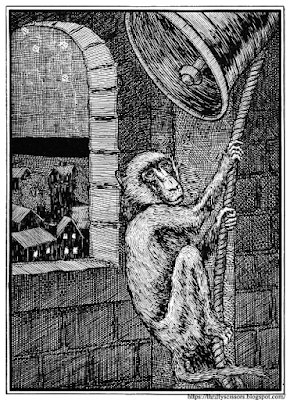Some years ago, a soldier doing duty at the castle of Cape Town, kept a tame baboon for his amusement. One evening it broke its chains unknown to him. In the night, climbing up into the belfry, it began to play with, and ring the bell. Immediately the whole place was in an uproar; some great danger was apprehended. Many thought that the castle was on fire; others, that an enemy had entered the bay, and the soldiers began actually to turn out, when it was discovered that the baboon had occasioned the disturbance. On the following morning a court-martial was held, when Cape justice dictated, that whereas the baboon had unnecessarily put the castle into alarm, the master should receive fifty lashes; the soldier, however, found means to evade the punishment.
Showing posts with label tufted ape or baboon. Show all posts
Showing posts with label tufted ape or baboon. Show all posts
Monday, November 14, 2022
Thursday, July 16, 2020
Baboon: 5 Fast Facts
 |
| The largest baboon, known as a Mandrill is nearly the height of a man when erect. |
Five Fast Facts About Baboons:
- They have long, abrupt muzzles like a dog, strong tusks or canine teeth, usually short tails, flabby cheek-pouches and small, deep eyes, with large eyebrows.
- Their hind and fore feet are well proportioned, so that they run easily on all fours, but they do not maintain themselves in an upright posture with facility.
- They are generally of the size of a moderately large dog, but the largest, the mandrill, is, when erect, nearly the height of a man.
- They are almost all confined to Africa and are ugly, sullen, fierce and gregarious, defending themselves by throwing stones or dirt.
- Baboons live on fruits and roots, eggs and insects.
3 More Types of Baboons:
- The cliacma or pig-tailed baboon, is found in considerable numbers in parts of the South African colonies, where the inhabitants wage war against them on account of the ravages they commit in the fields and gardens.
- The common baboon, of a brownish yellow color, inhabits a large part of Africa farther to the north.
- The hamadryad of Abyssinia is characterized by long hair, forming a sort of shoulder cape.
See the new Hamadryas Baboon
Troop at the San Diego Zoo.
Subscribe to:
Comments (Atom)

